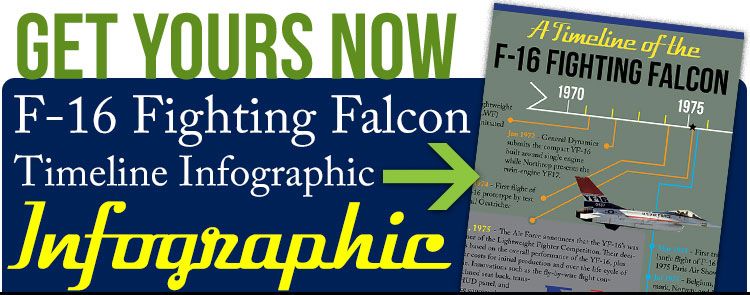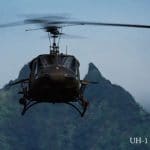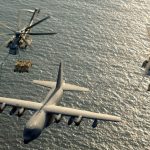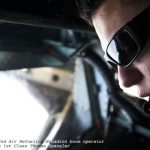The 1960s was a time of great achievement in aviation. From the first weather satellite launching in 1960 to the first human walking on the moon in 1969, the Sixties was a time that saw many great advances in flight as well as some tragedies along the way. The decade began with 29 aircraft incidents in 1960 and ending with 20 in 1969. Add that to hijackings becoming so commonplace, 58 in 1968 and 1969 alone, that when you got on a plane in the U.S. you weren’t exactly sure if your flight would make it to Chicago or be diverted to Havana, Cuba.

Also, read our Jet Friday articles
We have reduced the list below to mostly include the “firsts”, like the first human in space and the first flights of popular aircraft It is not an exhaustive list that includes every event, but is a great summary of such a notable aviation decade.
A Timeline of the Sixties and Aviation
1960
February 9 – The United States Air Force opens its National Space Surveillance Control Center at Bedford, Massachusetts.
May 1 – The Soviet Union shoots down a Central Intelligence Agency Lockheed U-2 near Sverdlovsk and captures its pilot, Gary Powers.
September 5 – A United States Navy McDonnell F4H-1 Phantom II sets a world speed record over a 500-km (310.5-mi) closed-circuit course, averaging 1,216.78 mph
December 17 – The visitor′s center at the Wright Brothers National Memorial in Kill Devil Hills, North Carolina, is dedicated on the 57th anniversary of the Wright Flyer′s first flight in 1903.
1961
February 3 – Operation Looking Glass commences, giving the United States Air Force′s Strategic Air Command a permanent, airborne command post.
March 7 – Flying a North American X-15, U.S. Air Force Major Robert M. White becomes the first pilot to exceed Mach 4.
April 12 – Yuri Gagarin becomes the first human in space, making a 108-minute orbital flight in his Vostok 1 spacecraft
May 5 – Freedom 7: First U.S. human (Alan Shepard) space flight.
October 21 – The first fully successful experimental V/STOL fighter, the Hawker Siddeley P1127, takes its first flight.
November 25 – The United States Navy commissions its first nuclear-powered aircraft carrier, USS Enterprise
1962
January 15 – The U.S. Army suffers its first combat fatalities in an aircraft in Vietnam when an H-21C Shawnee transport helicopter is shot down by Viet Cong ground fire near Dak Roda, South Vietnam, with three killed.
February 20 – John H. Glenn, Jr., is the first American to orbit the earth.
March 2 – The U.S. Federal Aviation Administration forms its Peace Officers Program – a forerunner of the U.S. Federal Air Marshal Service
April 25 – The United States Department of Defense announces its choice of the Northrop F-5 Freedom Fighter for its Military Assistance Program
August 29 – An American Lockheed U-2 photographs the entire island of Cuba, revealing for the first time the presence of eight Soviet surface-to-air missile sites along Cuba’s northwest coast designed to provide strategic air defense of Cuba from the United States.
October 14 – A U.S. Air Force Lockheed U-2 reconnaissance flight over Cuba reveals the presence of launchpads for medium-range ballistic missiles, triggering the Cuban Missile Crisis.
October – Scheduled commercial airline flights between the United States and Cuba come to an end. Direct flights between the two countries would not resume until August 31, 2016.
November – First US Army Attack Helicopter, a model of the UH-1B Iroquois, arrives in South Vietnam
November 27 – Boeing rolls out the first Boeing 727 airliner
1963
February 8 – The Royal Navy conducts the world’s first experimental trials of a vertical take-off and landing fixed-wing aircraft, the Hawker Siddeley P.1127 prototype
May 27 – First flight of the McDonnell F-4C Phantom II, first United States Air Force version of the F-4 Phantom II
June 16 – Russian cosmonaut Valentina Tereshkova becomes the first woman to solo in space
October – In an exercise named Operation Big Lift, the United States Air Force airlifts an entire armored division of 15,000 troops to Europe within five days
1964
February 29 – U.S. President Lyndon B. Johnson reveals the existence of the CIA’s Lockheed A-12 reconnaissance aircraft
April 11 – Jerrie Mock becomes the first woman to pilot a plane around the world successfully
May 4 – Jacqueline Cochran established the official world speed record for women in a Lockheed F-104G Starfighter, average speed 1,429.297-mph
August – In Project Tailchaser, the USAF tests the concept of a fixed-wing gunship, converting a Convair C-131B Samaritan to fire a single GAU-2/A Minigun at a downward angle out of the left side of the aircraft at ground targets.
October 13 – The first production Learjet, a Model 23, is delivered.
October 30 – The North American Air Defense Command begins manning its Combat Operations Center in the Cheyenne Mountain Complex in Colorado
1965
April 3 – The first jet-to-jet combat of the Vietnam War occurs. Although all American aircraft involved return safely, the North Vietnamese Air Force claims to have shot down a U.S. Navy F-8 Crusader fighter and in future years celebrates April 3 as “North Vietnamese Air Force Day.”
April 23 – The first production C-141A Starlifter cargo aircraft is delivered to the U.S. Air Force‘s Military Airlift Command
September 7 – First flight of the Bell Model 209, a prototype of the AH-1G Cobra
Sept 27 – First Flight of the A-7 Corsair II
September 11 – The United States Army′s 1st Cavalry Division (Airmobile) arrives in South Vietnam with 400 helicopters
November 14–18 – The U.S. Army’s helicopter assault concept has made its combat debut in The Battle of Ia Drang in South Vietnam as the 1st Cavalry Division (Airmobile) undergoes its baptism of fire, losing only four helicopters to North Vietnamese fire during the campaign
December 2 – The U.S. Navy aircraft carrier USS Enterprise (CVA(N)-65) becomes the first nuclear-powered warship to see combat when she launches air strikes at the Viet Cong near Biên Hòa, South Vietnam.
1966
January 22 – The U.S. Air Force completes Operation Blue Light, the largest airlift of troops and equipment into a combat zone in history. During the operation, which began on December 27, 1965, the Air Force flew 4,600 short tons (4,173 metric tons) of equipment and over 3,000 troops from Hickam Air Force Base, Hawaii, to Pleiku, South Vietnam.
February 28 – A NASA T-38 Talon crashes at Lambert Field in St. Louis, Missouri, killing astronauts Elliot See and Charles Bassett, the prime crew for Gemini 9, scheduled to launch in early June.
March 1966 – United States Marine Corps Marine Medium Helicopter Squadron 164 (HMM-164) arrives in South Vietnam with 27 Boeing Vertol CH-46A Sea Knights, becoming the first unit to make a combat deployment with the CH-46.
May – Mikoyan-Gurevich MiG-21s start to appear in the skies over Vietnam.
June 6 – Outfitted with test sensors, the United States Air Force′s second North American XB-70A Valkyrie – named Air Vehicle 2 (AV-2) – conducts a sonic boom test, reaching Mach 3.05 at an altitude of 72,000 feet (21,946 meters).
June 7 – Robert and Joan Wallick set around-the-world flight record.
June 8 – During a publicity photo shoot of aircraft powered by General Electric engines in which the U.S. Air Force′s second XB-70A research aircraft – named Air Vehicle 2 (AV-2) – flies in formation with an F-4 Phantom II, an F-5 Freedom Fighter, an F-104 Starfighter, and a T-38 Talon at an altitude of about 25,000 feet, the F-104 collides with the XB-70A. The F-104 explodes, killing its pilot, NASA chief test pilot Joseph A. Walker. The XB-70A crashes and is destroyed. The XB-70A′s copilot is killed, while its pilot, Alvin S. White ejects and suffers serious injuries.
June 20 – Sheila Scott completes a solo round-the-world flight.
June 29 – The U.S. Air Force bombs Hanoi for the first time.
August 14 – The Lunar Orbiter 1 is the first U.S. spacecraft to orbit the moon.
August 28 – The Soviet Union announces that it is training North Vietnamese Air Force pilots.
August 31 – First flight of the Hawker Siddeley Harrier
October 15 – An act of Congress creates the United States Department of Transportation. When it begins operations on 1 April 1967, the Federal Aviation Agency and Civil Aeronautics Board become components of it of the new agency.
November 18 – Captain William J. Knight flies the North American X-15 at a record speed of Mach 6.33 (4,250 mph, 6,840 km/h).
December 23 – First flight of the Dassault Mirage F1
1967
January 15 – The halftime show at the first AFL-NFL World Championship Game – retroactively dubbed Super Bowl I — includes two men who emerge from giant foam footballs flying around the field with jetpacks
February 21 – McDonnell Aircraft completes the 2,000th F-4 Phantom II
March 10 – Pardo Push – After the F-4 Phantom of his wingman, Captain Earl Aman, suffers damage from anti-aircraft fire over North Vietnam and loses almost all of its fuel, U.S. Air Force Captain Robert Pardo has Aman lower his tailhook and pushes Aman’s F-4 by maneuvering to place Aman’s tailhook against the base of his own windscreen. With one of his own F-4’s engines on fire, Pardo pushes Aman’ powerless plane for 90 miles, and all four men aboard the two fighters eject over Laos, where they can avoid capture rather than be stranded in North Vietnam
April 1 – The United States creates the National Transportation Safety Board, responsible for civil transportation accident investigation, including aviation accidents and incidents. It takes over this function from the Civil Aeronautics Board, whose responsibilities henceforth are limited to the regulation of commercial airline routes and fares.
May 18 – The NASA announces crew members for the first manned Apollo program space mission, Apollo 7. They are Walter M. Schirra, Jr., Donn F. Eisele, and R. Walter Cunningham.
June 5 – Six-Day War begins – In a surprise preemptive attack, the Israel Air Force destroys the air capacity of Egypt, Jordan, and Syria. Egypt, Jordan, and Syria lose 452 aircraft, while Israel loses 46. Israel has complete control of the air for the remainder of the war.
August 9 – The world’s first radar-equipped antisubmarine helicopter enters service, a Royal Navy Fleet Air Arm Westland Wessex HAS.3 with No. 814 Squadron.
October 8 – The first helicopter gunship designed as such to see combat, the U.S. Army’s AH-1G Cobra flies its first combat mission when two operating over South Vietnam escort U.S. Army transport helicopters, then support South Vietnamese troops by destroying four enemy fortifications and sinking 14 sampans.
November 8–9 (overnight) – Shot down by Viet Cong ground fire in an HH-3E helicopter and badly burned during a rescue mission southeast of Khe Sanh, South Vietnam, U.S. Air Force Captain Gerald O. Young deliberately draws attention to himself, then evades the enemy on the ground for hours to lead enemy forces away from other Americans on the ground and additional helicopters coming to rescue them. He would receive the Medal of Honor for his actions.
December 31 – NASA begins initial talks to develop guidelines for a reusable spaceplane.
1968
March 8 – The United States Army announces that Bell Helicopter’s Model 206A has won the Light Observation Helicopter competition. It would go into production for the Army as the Bell OH-58 Kiowa.
May 5 – A Grumman Gulfstream II becomes the first executive jet to cross the Atlantic Ocean.
June 30 – FIrst flight of the C-5 Galaxy
September 30 – Boeing debuts the first 747 jumbo jet.
December 17 – The last surviving XB-70 Valkyrie – the U.S. Air Force′s XB-70A Air Vehicle 1 (AV-1) – makes its last supersonic flight.
December 20 – At Edwards Air Force Base, California, X-15 program personnel attempting a 200th flight of the North American X-15 find the base covered by snow. Deeming the highly unusual snowfall a bad omen, they decide against the flight and simply retire the aircraft instead. It is the end of the X-15 program.
December 24 – Apollo 8 orbits the moon carrying Frank Borman, James Lovell, and William Anders.
1969
January 14 – The United States Navy announces that the Grumman F-14 Tomcat has won the competition for a new long-range fleet air defense fighter
February 4 – North American XB-70 Valkyrie is retired by the United States Air Force
March 2 – The first flight of the Concorde supersonic airliner.
March 3 – The United States Navy establishes its Fighter Weapons School at Naval Air Station Miramar, California, to improve its fighter pilots′ dogfighting skills. The school would become popularly known as “TOPGUN.”
May 10 – The United States Army′s 101st Airborne Division (Airmobile), the U.S. 9th Marine Regiment, and the South Vietnamese Army’s 3rd Regiment begin Operation Apache Snow in South Vietnam′s A Shau Valley with a helicopter assault on North Vietnamese forces. It would lead to the Battle of Hamburger Hill.[16]
May 23 – Bell OH-58 Kiowa enters service with United States Army
July 17 – The last air-to-air combat between piston-engined fighters takes place, when Honduran Air Force Colonel Fernando Soto, flying an F4U-5 Corsair fighter, shoots down three Salvadoran Air Force fighters – two FG-1 Corsairs and an F-51 Mustang
July 20 – U.S. astronauts Neil A. Armstrong and Edwin E. Aldrin, Jr. are the first to walk on the moon.
August – South Vietnam receives its first fixed-wing gunships when the Vietnam Air Force’s 817th Combat Squadron takes over control of 16 Douglas AC-47 Spooky aircraft transferred from the United States Air Force.
October 20 – Finnair introduces an inertial navigation system on its aircraft, becoming the first airline to dispense with the need for a navigator aboard.
December 18 – The England-Australia Commemorative Air Race is flown in commemoration of the 50th anniversary of the Smith brothers’ flight








